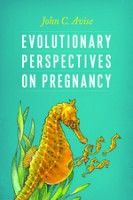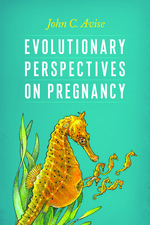 Author: John C. Avise. Drawings by Trudy Nicholson
Author: John C. Avise. Drawings by Trudy Nicholson
Publisher: Columbia University Press – 326 pages
Book Review by: Paiso Jamakar
This is a unique and truly remarkable book. In it, you will read about and see numerous sketches of pregnant animals, fishes, other sea creatures such as mollusks and sea urchins; reptiles, insects and even worms.
You will most likely not find any other book “pregnant” with surprising and highly enlightening information on an aspect of biology – reproduction – that has been rarely explored in the manner this book does.
John C. Avise takes you on an enjoyable journey of discovery, shows and explains to you how some animals used to procreate and how evolution has modified that. To make you better understand the scope of the material, he has provided an ample number of charts with statistical data.
Its fascinating eight chapters are divided into two main parts. Part I is Distribution and Diversity of Pregnancy and Part II is Evolutionary Ramifications of Pregnancy. Part I has first five chapters and Part II has the other three.
To give you an overview of the range of subjects in this book, the chapters are:
- One Generation Inside Another
- Vertebrate Live-Bearers: The Borne and the Born
- Vertebrate Alternatives to Standard Pregnancy
- Non-vertebrate Brooders
- Human Pregnancy in Mythology and in Real Life
- Natural Selection During Mammalian Pregnancy
- Sexual Selection and Piscine Pregnancy
- Pregnancy in a Comparative Light
You probably did not think that the period of pregnancy for some animals can be as short as a few days, but you will discover in this book that this is so, and what animals those are, that are so lucky, compared to the long nine-month period for us, members of the homo sapiens. On the other extreme, as you most likely did not imagine, some species of animals are pregnant for several years, which we would not wish upon our human females.
In terms of number, most mammals give birth to a single offspring, although history has cited cases of as many as eight babies among humans. On the other end of the scale, some species, such as some fishes and other invertebrates, produce thousands of offspring in a single event.
And with regards to gender, it is known now that more than 200 species of male fish become pregnant. In still other instances, hermaphroditic (dual-sex) or parthogenetic (asexual) members of some species carry offspring.
Humans carry their offspring in the uterus. You will be shocked to learn that among other living beings in nature, they are carried for incubation in many other parts of their bodies, including in the ovary, stomach, mouth, vocal sac, gill chamber, and other sections. In some cases, they are stuck (or hooked) to their back, forehead, legs, or tail. In some instances, the offspring are even “deposited” in “special external hatcheries,” the author points out.
This is an unusual book and well worth reading for anyone interested in exploring the phenomenon of pregnancy among living beings. It is an important work in reproductive biology because it unearths information that evokes and sense of awe and wonder, especially among laymen who are unfamiliar with the subject.
John C. Avise has painstakingly compiled a vast amount of information and skillfully organized and presented it in words that anyone of average intelligence can understand. We commend him for a well-researched, highly readable, and wonderfully delightful book. Thank you, Mr. Avise for your great contribution to knowledge.
John C. Avise is a Distinguished Professor at the University of California, Irvine, and an elected member of the National Academy of Sciences, the American Academy of Arts and Sciences, and the American Philosophical Society. He is also the author of Clonality: The Genetics, Ecology, and Evolution of Sexual Abstinence in Vertebrate Animals and Hermaphroditism: A Primer on the Biology, Ecology and Evolution of Dual Sexuality.







